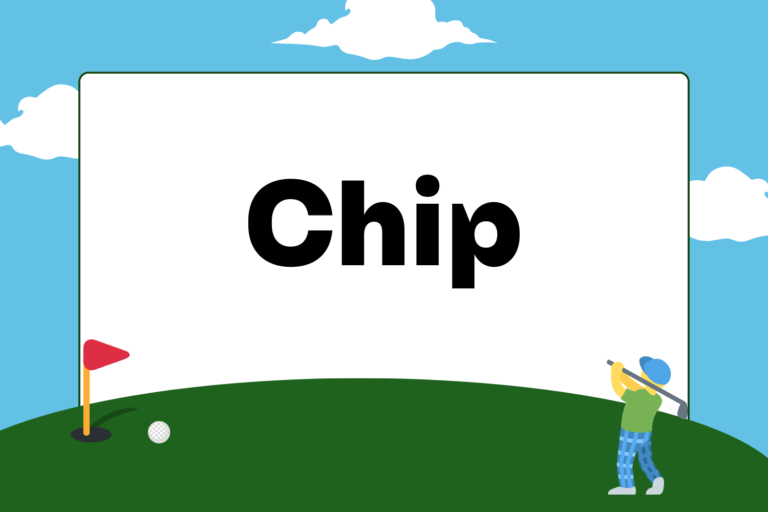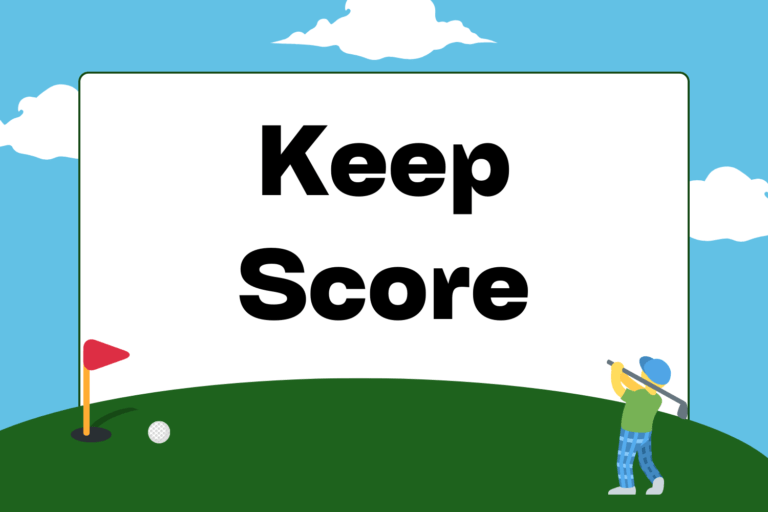No matter how good of a putting stroke you’ve got, if you can’t read the green you’re on, you won’t make many putts. Three observations will inform your choice of line and speed:
- The slope of the green.
- The direction of the grain.
- The condition of the green.
This guide will go over the specifics you’re looking out for in these areas, and the ways in which you can best find them. By the end, you will have a clearer understanding of what it means to read a green. Then once you get a chance to implement your new knowledge on the course, you’ll be able to lower your number of putts per round.
Positioning Yourself
Before you can begin reading the green, you need to get low to the ground. Most golfers simply squat behind the ball to judge the line of their putt, but getting low allows for more than that. From so close to the ground, you can literally see the blades of grass that make up the putting surface (more on that later).
Here are some quick tips about where to be while reading greens:
- Getting low behind the ball is important, but so is walking to the opposite side of the hole and reading the green from there. Sometimes a slope is more readable from different angles, so don’t just limit yourself to the spot behind the ball.
- If your ball is toward the edge of a green with a bunker or grass slope behind it, feel free to stand off of the green, where the drop-off will let you have an even better green-level eye-line.
- Before you play your round, use a marker to draw a straight line on your golf ball. This way, when you reach the green and mark your ball, you can properly read the green, chose an intended line, and then set up your golf ball to have a perfect indicator of that line.
Hot Tip: Keep Others in Mind
Although you deserve the time to feel like you’ve had a chance to read the green as thoroughly as you think necessary, remember to keep your playing partners and the group of golfers behind yours in mind. Reading greens during competition, for example, may warrant a more lengthy investigation than reading a green during a weekend round of golf with the buddies. Basically, don’t feel rushed, but at the same time, don’t pretend like every putt you have out there is for the green jacket.
Slope of the Green
The most significant and obvious thing you’ve got to look for when reading greens is the green’s slope. In other words, what you’re looking for here is the way the green rises, falls, tilts, or rolls. Any part of the green ahead of your ball will affect the roll of your ball.
The two main aspects of putting, line and speed, are both hugely affected by the green’s slope. The slope’s effects on the ball use relatively common sense: uphill putts will roll slower, downhill putts will roll faster, and side-hill putts will turn one way or the other, depending on which side of the hill you’re putting on.
The tougher job is to be able to answer the question, how much? How much harder do I have to hit this uphill putt? How much softer do I have to hit this downhill putt? How much to the right or left of the hole do I have to start this putt for the ball to end up on the right line? Once you can confidently answer these questions, you’ve read the slope of the green successfully.
Direction of the Grain
A less obvious aspect of green reading is the grain—the direction in which the blades of grass grow on the green. When putting against the grain, expect to hit the ball a little harder than you normally would. With putts along the grain, you can soften your touch a bit. Here are a few ways to know which direction the grain is going:
- Color: Standing behind your ball and facing the hole, if the green looks dark, you’re putting down the grain, and if it looks light, you’re definitely putting into the grain.
- Check the Hole: Usually, blades of grass will continue in their direction along the edge of the cup. Take a close look to see which side of the cup seems to have grass growing toward it, and which side seems to have grass growing away from it.
- Test the Fringe: You can rub your fingers or the head of your putter against the fringe to discover the direction of the grain. Be careful when physically checking the grass, because although it’s a good tool to use on the fringe, it’s against the rules on the putting green.
Hot Tip: Learn from Others
One thing you can do to improve your green reading skills is to pay attention to the way the golf balls of your playing partners roll on the green. If someone in your group is chipping onto the green, watch the ball’s speed and notice any breaks it makes. Same goes for putting. If you get lucky enough to have a playing partner whose putt is on almost the same line as your putt (if he or she goes first), you basically get a free preview of your putt. In these cases, pay especially close attention, but make sure you don’t disturb your partner in an attempt to watch the putt.
Playing the Break
The left-to-right or right-to-left turn of your putt is called its break. Although the slope of the green is the biggest influence on the break, the speed of your putt affects the break, as well.
As a general rule of thumb, the harder you have to hit the ball, the less break you should play.
That is, putts you have to hit uphill, putts into the grain, putts on soft or wet greens, and putts into a strong wind are all putts you have to hit harder than usual. For these kinds of putts, the extra strength you give the ball will lessen the effects of the green’s slope.
And for putts you hit downhill, putts down the grain, putts on dry or hard greens, and putts with a strong wind behind you, you don’t have to hit the ball as hard. This will cause the green’s slope to have more effect on your roll, so make sure to play more break on these kinds of putts.
Practice
Reading greens is a skill that you’ll have to adapt every time you step onto a golf course. Every green is different, and even the same golf course has differences depending on the time of day, the weather, and the condition of each green. So the most important thing you can do before playing a round of golf—even if it’s on a course with which you’re familiar—is taking some time to putt on the practice green.
You’ll get a sense of the green’s softness, grass length, and speed. And when you’re on the course, after you’ve done your best to read the green, the best thing you can do is trust your judgment and commit to the line you’ve chosen. Sooner than later, you’ll see more and more of your putts drop.





